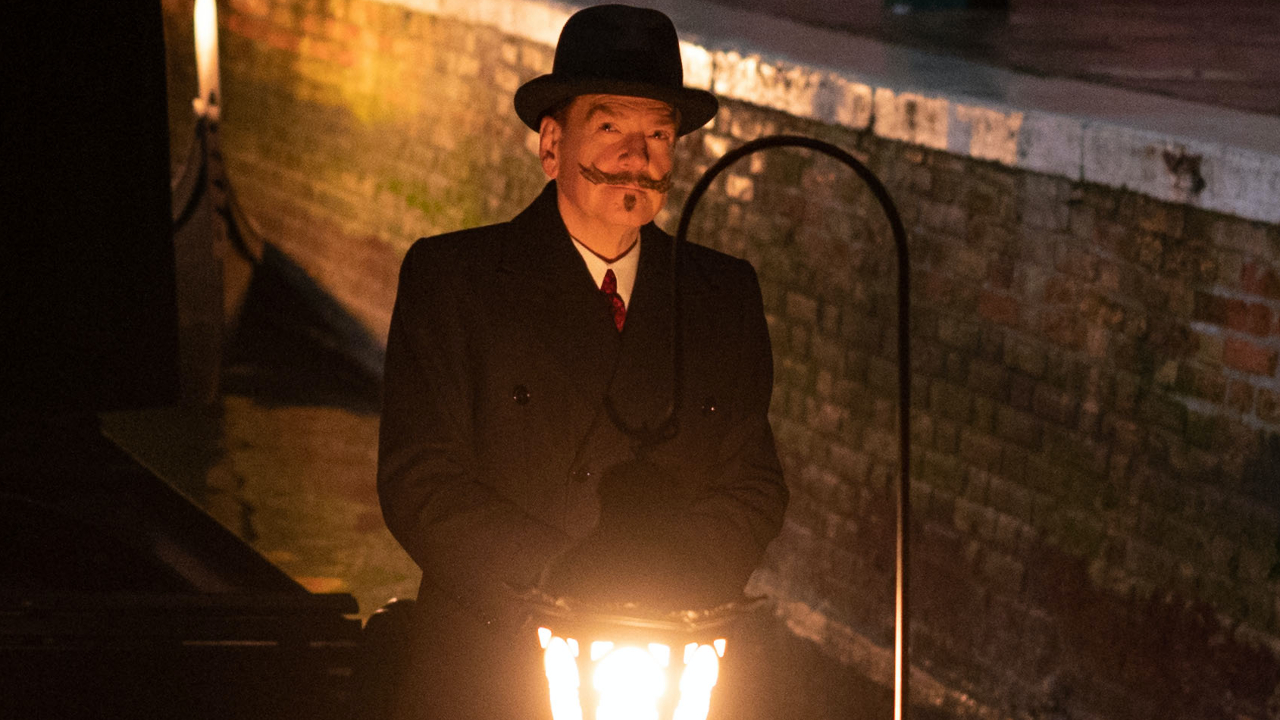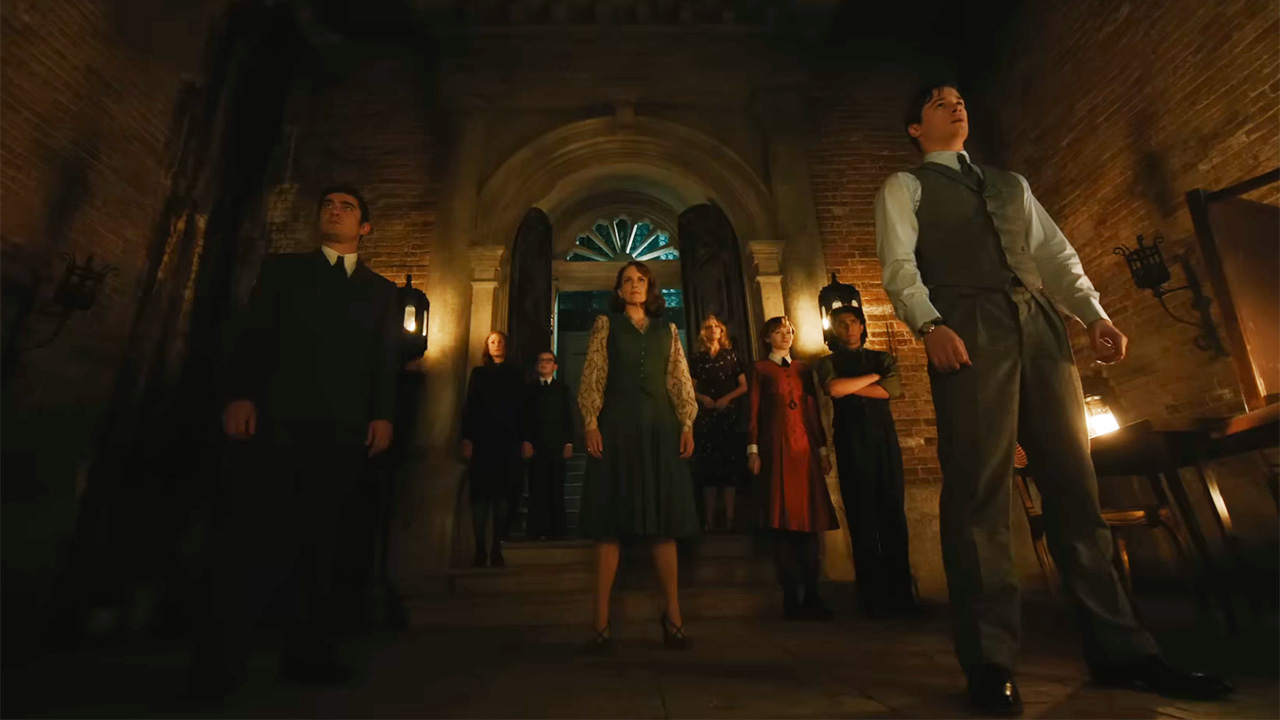As A Haunting in Venice continues to introduce the world to a new interpretation of Agatha Christie’s work, the third Hercule Poirot film from director Kenneth Branagh is sure to surprise loyal readers. Taking the source novel Hallowe’en Party and turning it into a vastly different mystery from what was contained in its pages, this 2023 movie release is a surprise after adaptations of more familiar books like Murder on the Orient Express and Death on the Nile.
For the creative team behind Venice, this opportunity represented an uncharted frontier. That excitement was reflected by several participants I spoke with for 20th Century Studios’ press day for the movie. Starting with Agatha Christie’s great-grandson, and CEO of her estate, James Pritchard shared this outlook on the new spin on Hercule Poirot’s case files with CinemaBlend:
I don’t think it’s ever really whether a book is well known or not, although it can make a difference. I think how this came about was from a desire to do something a little bit different, and mainly that was around tone rather than story. So having made Murder on the Orient Express and Death on the Nile, both big famous books and fairly faithful adaptations, Michael Green, the writer, I think felt that it would be quite fun to surprise our audience by doing something a little bit different. He came upon Hallowe’en Party as a way of doing that, and I think one of the things he sensed was it could be used to do something different tonally. There are elements of horror in this film. It’s essentially, I think, a suspense thriller. I don’t think it’s a horror film in any way, actually, it’s a murder mystery at its heart. But I think he chose the story, we chose the story, because of what it could do in terms of tone. And I think it will surprise people that this can be done with an Agatha Christie [book], but I think that’s for the good.
As Pritchard approved of changes to the source, the setting and tone of A Haunting in Venice were allowed to be shaped to the vision of the team he’s trusted since the beginning. With that change in approach also came a shift in the creative team that signed on to make Poirot’s latest adventure into something truly unique.
One such party was 2020 Academy Award winner and composer Hildur Guðnadóttir, who stepped in to provide Venice’s score. After two films saw frequent Branagh collaborator Patrick Doyle serving those duties, this fresh take gave the composer behind Joker and Tár the chance to engage with the world of Hercule Poirot.
Speaking with CinemaBlend, here’s how Hildur saw A Haunting in Venice’s departure from tradition:
It felt so fresh, because obviously it’s never been adapted before, and it was kind of loosely based on one of her books. So they did really expand the story quite a lot from the original book. Luckily they did that really well, and the Agatha Christie Estate and her family are very very happy with the outcome. But it felt almost like you were diving into a new novel of hers, from a creative standpoint at least. You were not referencing other works. That was very exciting, so maybe that would be a good way forward to start adapting more of her lesser known novels, by expanding them.
Hildur Guðnadóttir has a particular interest in the adaptation of Agatha Christie’s works, though her viewpoint comes from that of a near and dear fan. Sharing a love of Christie and her novels with her mother, Guðnadóttir seemed just as pleased with how A Haunting in Venice adapted the original as James Pritchard was.
Once again, the novelty of innovation wins out, which just might point to why this Haunting’s critical acclaim stands as a sign that something went dreadfully right. In the final testimonial gathered during this day of discussion, I spoke with returning cinematographer Haris Zambarloukos, the man who shot both Murder on the Orient Express as well as Death on the Nile.

Another loyal member of Team Poirot’s initial roster, Zambarloukos’ highlighted the fact that filming Haunting with digital cameras made for a healthy switch-up this time around. Rather than the celluloid medium used for the previous films, the opportunity to shoot in low-light environments with the same lenses used for Ben Hur marked how Haris diverged in his work for this new picture.
That choice definitely mirrors his thoughts on the freshness of A Haunting in Venice, which he shared with CinemaBlend in the following context:
I think the path less trodden on is always the more interesting one. I don’t choose which stories we make. … But all I can say in this particular case is that I was very glad that we were working on something that we could look at with a fresh eye. This has been in the works for quite some time, between Kenneth and Mike Green, and I think they did a superb job of it. It started off from a great novel, and it really added something really unique and special to it. It was a pleasure to delve into, I think also, subject matter. It’s kind of almost a taboo subject matter that would be really difficult to touch on in a way, if it wasn’t at least presented in the way that Agatha Christie presents it. It’s a really, really horrific crime, and it required a very particular approach. We were, I think, grateful to be off the beaten track with this film.
No matter who you speak to in the crew of A Haunting in Venice, the same sort of happiness seems to present itself. With what feels like a brand new Agatha Christie mystery arriving in the world, all involved are quite proud of how they contributed to this fresh take on a classic sleuth. Should this case be as much of a windfall for 20th Century Studios as the previous two seemed to be, then perhaps there’s more room for even the most obscure case file to become a fresh hell for Hercule Poirot’s powers of deduction.
Aficionados of Hercule Poirot’s exploits are about to be blessed in the month of October. As A Haunting in Venice continues its box office run, Death on the Nile is still available for streaming through the use of a Hulu subscription. But for those of you who are up on everything new on Hulu, you’re probably counting down the days until Murder on the Orient Express joins the library yet again.
Happy haunting, mystery buffs; and don’t forget the “chocky chocky” pastries before you settle in. Hercule wouldn’t want you to watch without some sort of sweetness to offset the darkness in the hearts of his suspects.

